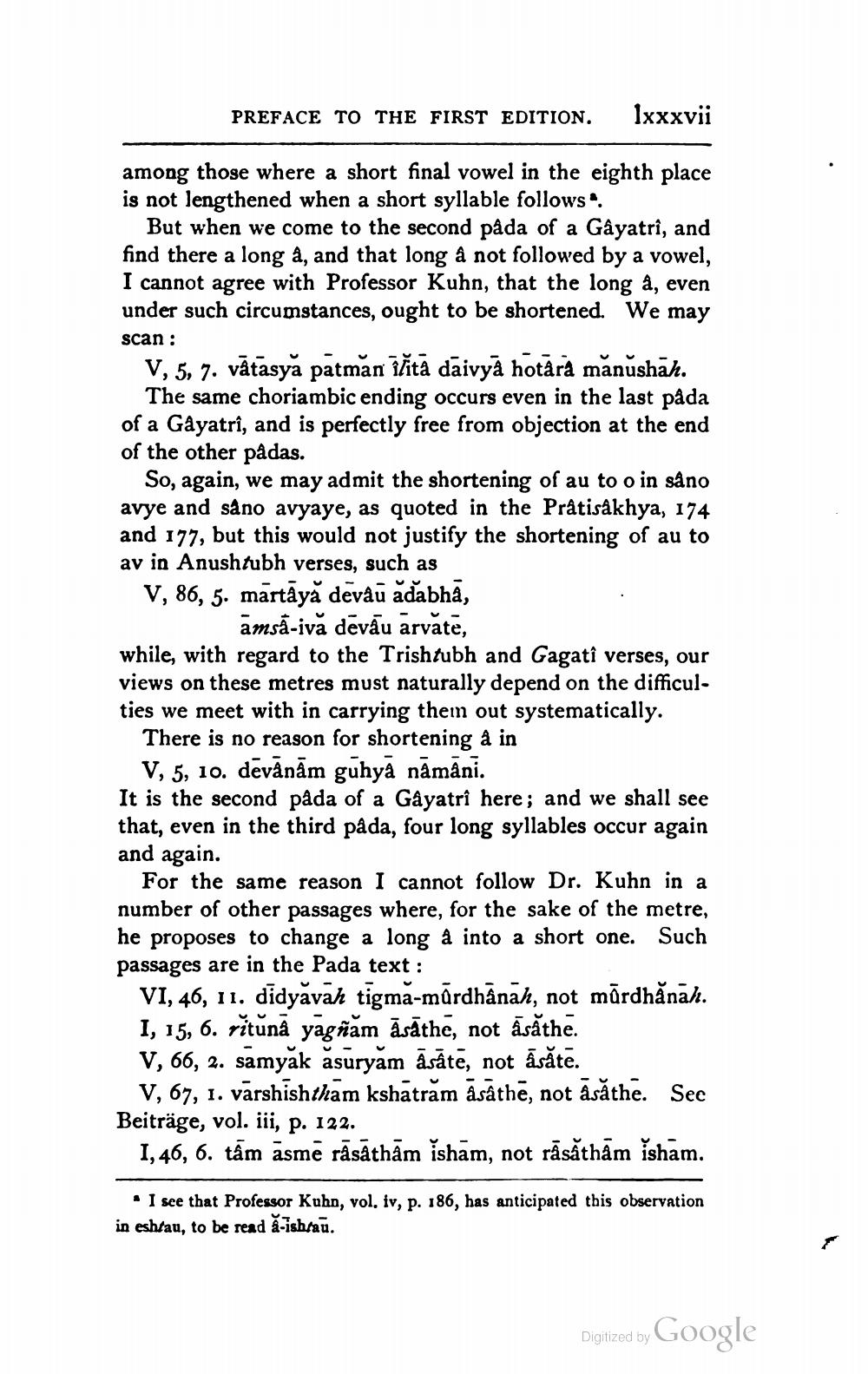________________
PREFACE TO THE FIRST EDITION.
Ixxxvii
among those where a short final vowel in the eighth place is not lengthened when a short syllable follows
But when we come to the second pâda of a Gayatri, and find there a long à, and that long à not followed by a vowel, I cannot agree with Professor Kuhn, that the long â, even under such circumstances, ought to be shortened. We may scan:
V, 5, 7. vātasya patman ilitā dāivyā hotāra mănushāh.
The same choriambic ending occurs even in the last påda of a Gayatrî, and is perfectly free from objection at the end of the other padas.
So, again, we may admit the shortening of au to o in sano avye and sano avyaye, as quoted in the Prátisakhya, 174 and 177, but this would not justify the shortening of au to av in Anushtubh verses, such as V, 86, 5. mārtāya devaū adabhā,
amsa-ivă devāu arvate, while, with regard to the Trishtubh and Gagati verses, our views on these metres must naturally depend on the difficul. ties we meet with in carrying them out systematically.
There is no reason for shortening à in
V, 5, 10. devānām guhyā nāmāni. It is the second pada of a Gayatri here; and we shall see that, even in the third påda, four long syllables occur again and again.
For the same reason I cannot follow Dr. Kuhn in a number of other passages where, for the sake of the metre, he proposes to change a long å into a short one. Such passages are in the Pada text :
VI, 46, 11. didyavah tigmă-mārdhānāh, not mārdhănah. I, 15, 6. rituna yagñam āsāthe, not āsathe. V, 66, 2. samyak asuryam āsātē, not āsătē.
V, 67, 1. värshishtham kshatram āsāthē, not asåthe. Sec Beiträge, vol. iii, p. 122.
1, 46, 6. tām āsmē rāsāthām ishām, not rāsăthām isham.
• I see that Professor Kuhn, vol. iv, p. 186, has anticipated this observation in eshtau, to be read ă-ishtau.
Digized by Google




